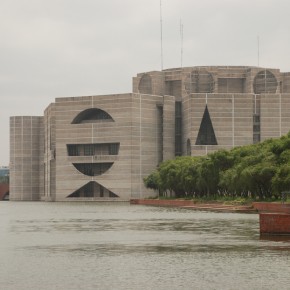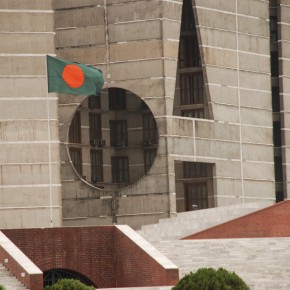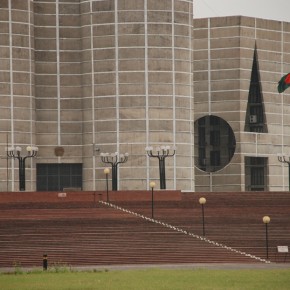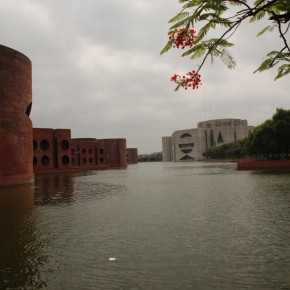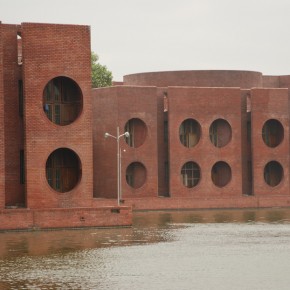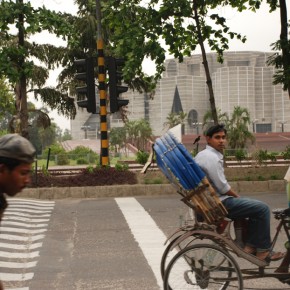One of Dhaka’s most arresting attractions is its magisterially bleak (or bleakly magisterial) national parliament, the Jatiyo Sangshad Bhaban. Constructed from massive blocks of unfinished reinforced concrete bisected by simple triangles and circles, the building is perhaps the crowning work in the career of American architect Louis Khan. Although commissioned as the national parliament of Pakistan in the 1960s, the building wasn’t completed until 1982, well after Bangladesh gained its independence from West Pakistan and around the time that such brutal modernism began to seem a little passe. Still, Bangladeshis are justifiably proud of the building — according to Wikipedia, one of the largest legislative complexes in the world — which has since become something of a symbol of the young nation. Khan himself said of the strange, almost child-like profusion of geometric shapes that “It was not belief, not design, not pattern, but the essence from which an institution could emerge”. He also described its unique design as a “many-faceted precious stone, constructed in concrete and marble”.
Predictably, I had the privilege of seeing this greyest of grey buildings under an overcast sky. Lake Road, the wide boulevard running along the back side of the parliament, was lined with joggers, chaste young couples and posters of independence icon Sheikh Mujibur Rahman and his daughter Sheikh Hasina, the current prime minister. Unfortunately, access to the inside of the building is restricted to casual visitors and guards direct a friendly but determined head-waggle at anyone seeking to walk past the checkpoints along the outer edges of the complex. Taimur Islam, the head of the Urban Study Group in Dhaka, told me that 48 hours’ notice is required for journalists to gain permission to see the inside of the building, but from my limited knowledge of South Asian bureaucracy, I imagine the process is considerably more protracted. (This is a stark contrast with Cambodia, where you can pretty much walk into any building not ringed with razorwire and armed guards, including — but not limited to — ministries and foreign embassies).
Kahn died of a heart attack in 1974 at New York’s Penn Station after returning from Bangladesh, leaving behind a slew of classic brutalist structures and plans for the Franklin D. Roosevelt Four Freedoms Park in New York, a commemoration of the late president. Kahn’s design for the park was abandoned after his death due to the city’s fiscal crisis, but was resurrected last year after an exhibition about the project’s history and a New York Times article published in 2005. It is apparently scheduled to begin construction soon. Kahn was also responsible for Yale University’s Centre for British Art, the Phillips Exeter Academy Library in New Hampshire and the Indian Institute of Management in Ahmedabad. Several more projects, including a synagogue in Israel and a presidential palace in Islamabad, Pakistan, remained unbuilt after his death. Click here for more on Kahn and his work.

- A section drawing of Kahn’s design for the parliament building.

